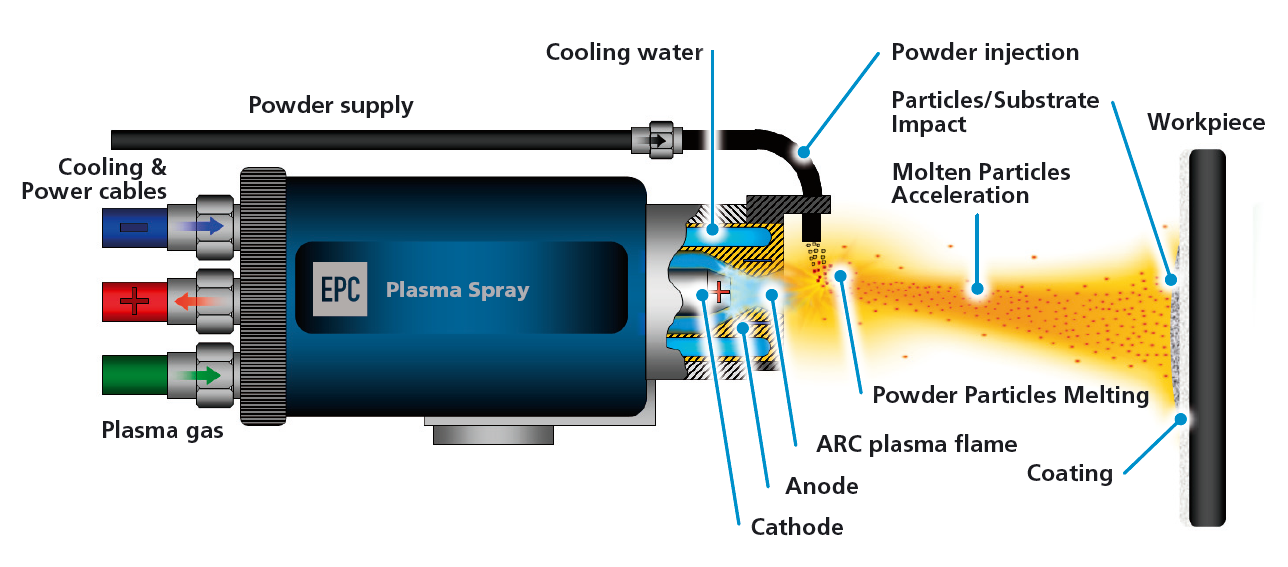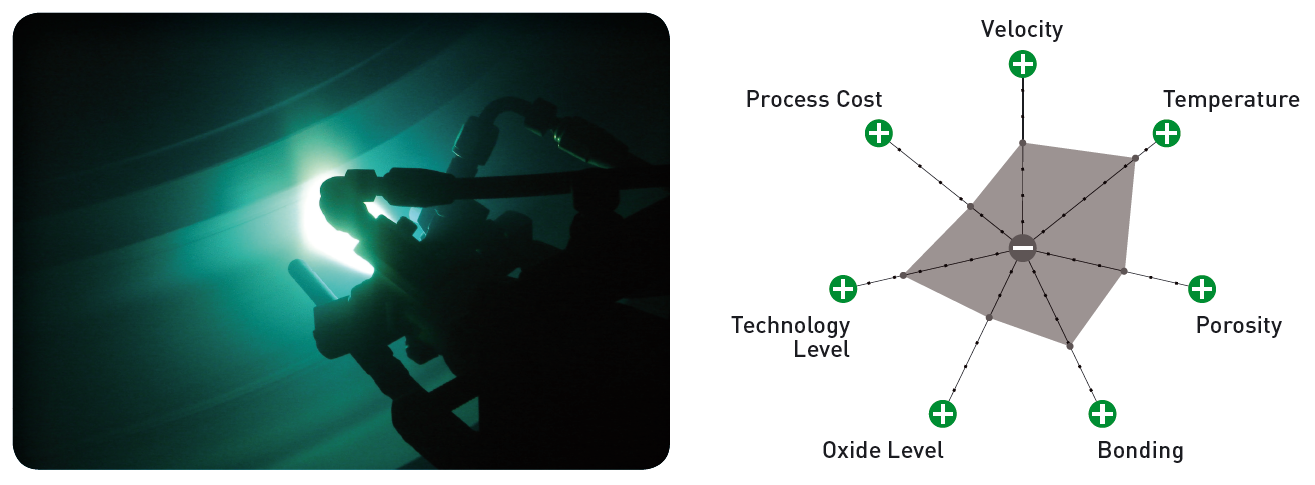The plasma spraying process utilises a highly energetic plasma jet to melt and accelerate material particles allowing the sprayed deposition of the coating.
In this process the heat source (plasma) is formed by the generation of a high density arc current in the space between cathode and anode filled with molecular or mono-atomic gases such as H2 or Ar. Ionised gases heat up to the temperatures of about 15,000°C and expand outside the nozzle reaching supersonic velocities.
Properties of the plasma stream can be controlled by cathode-nozzle arrangement (geometry), gas type, gas mixture ratio and electric arc settings. The resulting plasma stream can therefore greatly influence the degree of melting and acceleration of the chosen material, allowing deposition of coatings with tailored microstructural properties for specific industrial applications.


Coatings applied with plasma spraying:
- Pure metals (Cu, Al, Zn, Ni, Mo, W,…)
- Alloys (NiCr, NiAl, NiMoAl, NiCrSiB, Tribaloy, Inconel, Stellite, …)
- Carbides (WC/Co, CrC/NiCr, …)
- Ceramics (Al2O3, TiO2, Cr2O3, ZrO2/Y2O3, …)
- Abradables (Ni/Graphite, AlSi/Polyester, …)
Vast variety of material combinations allow plasma spraying to be used in wide spectrum of industrial applications providing:
- wear resistance
- corrosion resistance
- oxidation resistance
- thermal and electrical insulation
- electrical conductivity
View EP Coatings list of accreditation’s, and contact us to discuss how our Plasma Spraying services can help solve your challenges faced by your business.